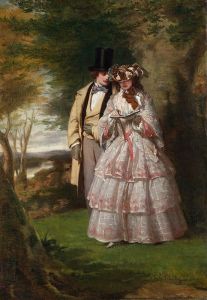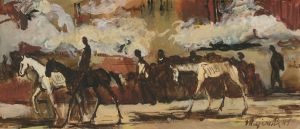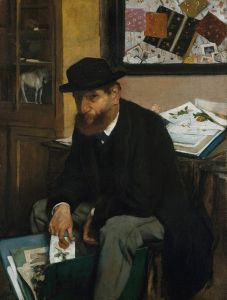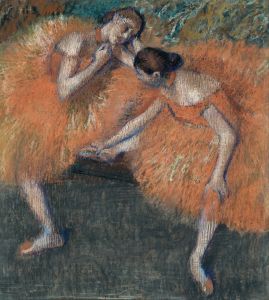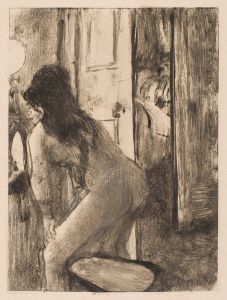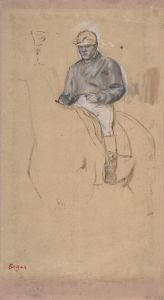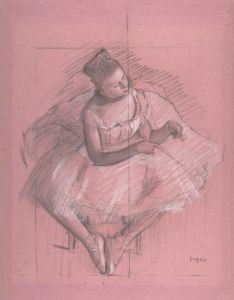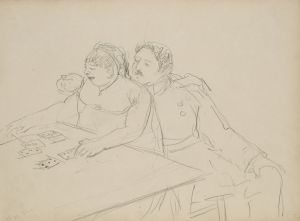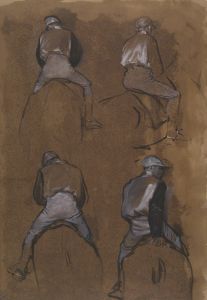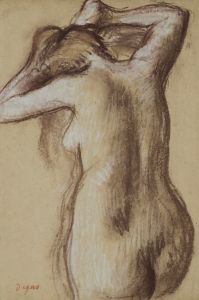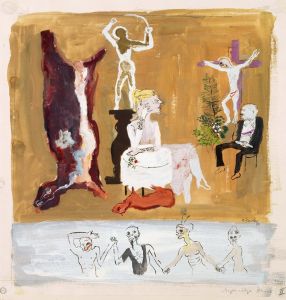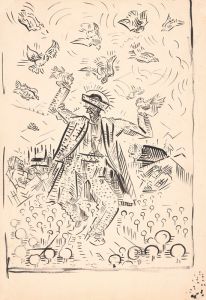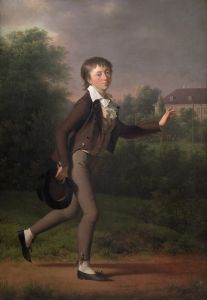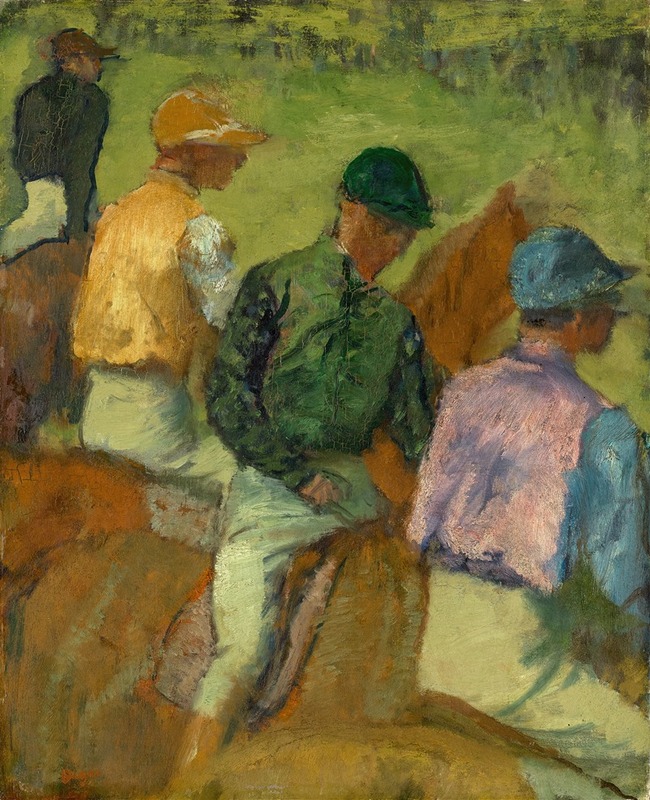
Four Jockeys
A hand-painted replica of Edgar Degas’s masterpiece Four Jockeys, meticulously crafted by professional artists to capture the true essence of the original. Each piece is created with museum-quality canvas and rare mineral pigments, carefully painted by experienced artists with delicate brushstrokes and rich, layered colors to perfectly recreate the texture of the original artwork. Unlike machine-printed reproductions, this hand-painted version brings the painting to life, infused with the artist’s emotions and skill in every stroke. Whether for personal collection or home decoration, it instantly elevates the artistic atmosphere of any space.
"Four Jockeys" is a painting by the renowned French artist Edgar Degas, who is widely celebrated for his contributions to the Impressionist movement, although he preferred to be associated with the term "Realist" or "Independent." Degas is best known for his depictions of dancers, but he also explored various other subjects, including horse racing, which is the focus of "Four Jockeys."
Created around 1886–1888, "Four Jockeys" is an oil painting that exemplifies Degas's interest in capturing movement and the dynamics of modern life. The painting features four jockeys on horseback, a subject that Degas revisited multiple times throughout his career. This particular work is noted for its composition and the way it conveys the energy and tension of a horse race.
Degas's fascination with horse racing began in the 1860s, and it became a recurring theme in his work. The sport was a popular pastime in France during the late 19th century, and it offered Degas an opportunity to study and depict motion, a challenge that intrigued many artists of the time. In "Four Jockeys," Degas captures the moment with a sense of immediacy and fluidity, employing his characteristic style that combines careful observation with an innovative approach to composition.
The painting is marked by Degas's use of bold colors and dynamic lines, which help to convey the speed and excitement of the race. The jockeys are depicted in various poses, each one conveying a sense of concentration and determination. The horses, rendered with a keen eye for anatomical detail, are shown in mid-stride, their powerful forms suggesting movement and grace.
Degas's technique in "Four Jockeys" reflects his interest in photography and Japanese prints, both of which influenced his approach to composition and perspective. The painting's unconventional cropping and the way the figures are arranged suggest a snapshot-like quality, as if capturing a fleeting moment in time. This approach was innovative for its time and contributed to Degas's reputation as a forward-thinking artist.
"Four Jockeys" is housed in the collection of the National Gallery of Art in Washington, D.C. It is part of a series of works by Degas that explore the theme of horse racing, each one offering a unique perspective on the subject. The painting is appreciated not only for its artistic merit but also for its insight into the cultural and social milieu of late 19th-century France.
Degas's work in this area is significant for its exploration of movement and the human form, themes that he pursued throughout his career. "Four Jockeys" stands as a testament to his skill as an observer and his ability to convey the dynamism of modern life through art. The painting continues to be studied and admired for its technical prowess and its contribution to the development of modern art.





